#dinosaur museum in Alberta
Photo

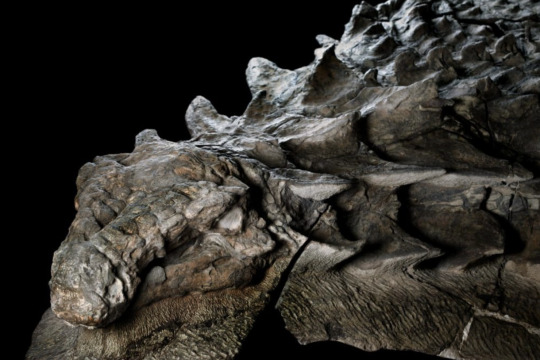
Discovered in a mine in Alberta, Canada in 2011, a fossil of a nodosaur dinosaur is one of the most well-preserved fossils of its kind, down to its skin, scales and even the contents of its stomach. These heavily-armored herbivores walked the Earth between the Late Jurassic and Late Cretaceous periods, with this particular specimen dating back 110 million years.
Considered one of the major archeological finds from the last decade, the nodosaur is currently on display at the Royal Tyrrell Museum in Alberta, Canada
#nodosaur#dinosaurs#dinosaur fossil#major archaeological find#dinosaur fossils#Royal Tyrrell Museum dinosaur finds#dinosaur museum in Alberta#Canada#archeology#archeological discoveries#mummified dinosaur
290 notes
·
View notes
Text
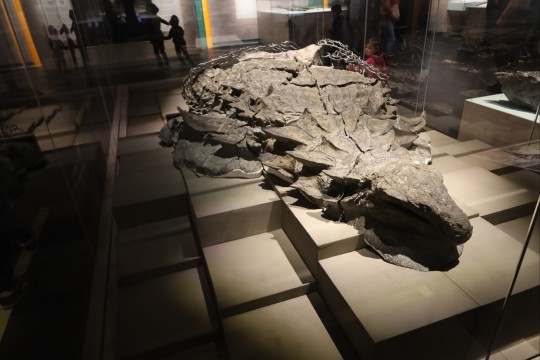
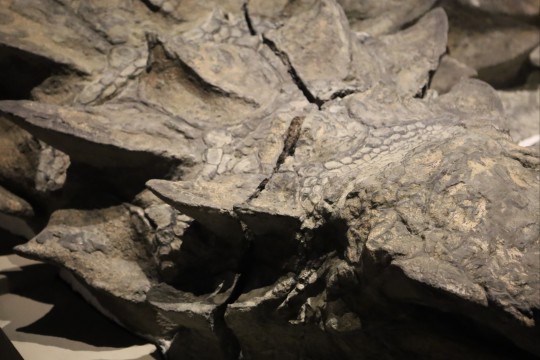
I love this dino. The skin details are so well preserved
24 notes
·
View notes
Text
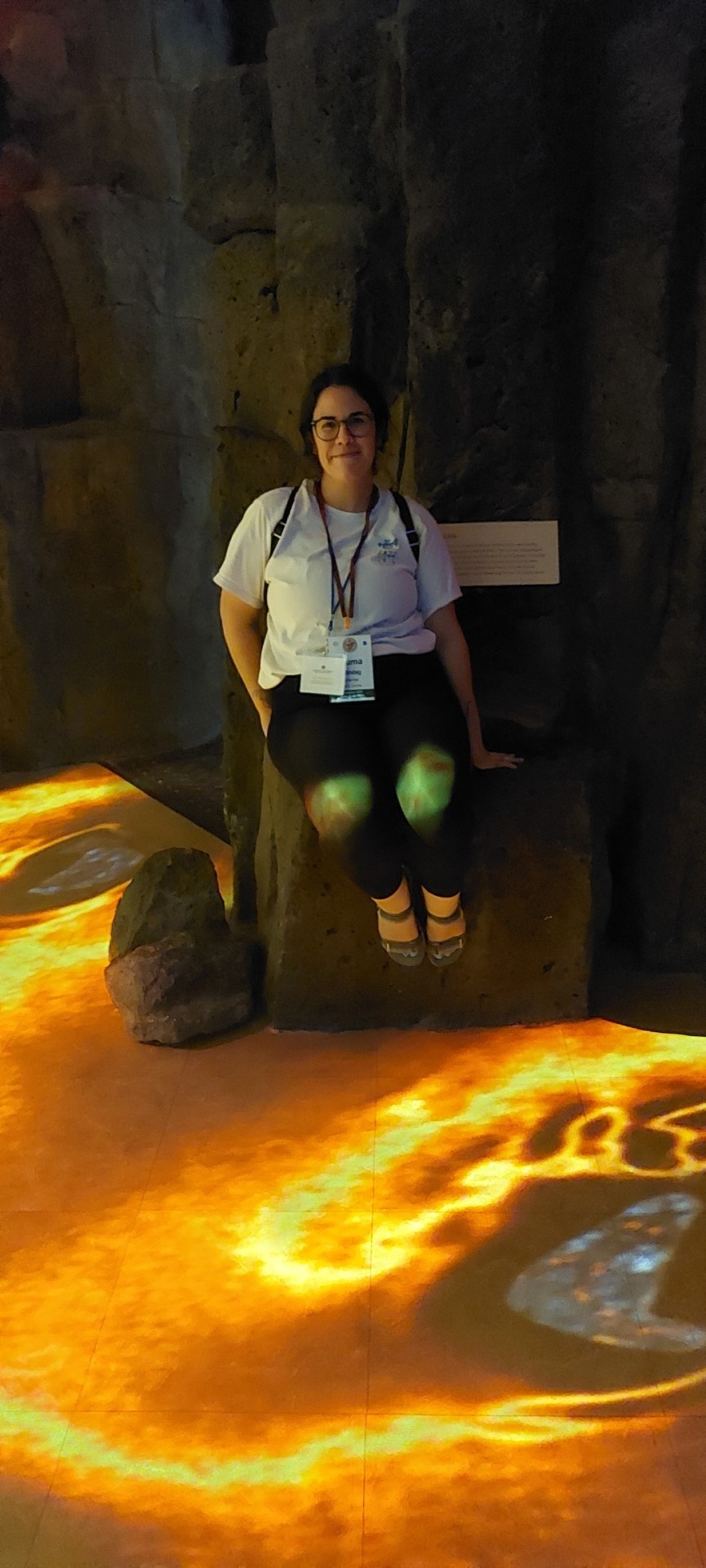
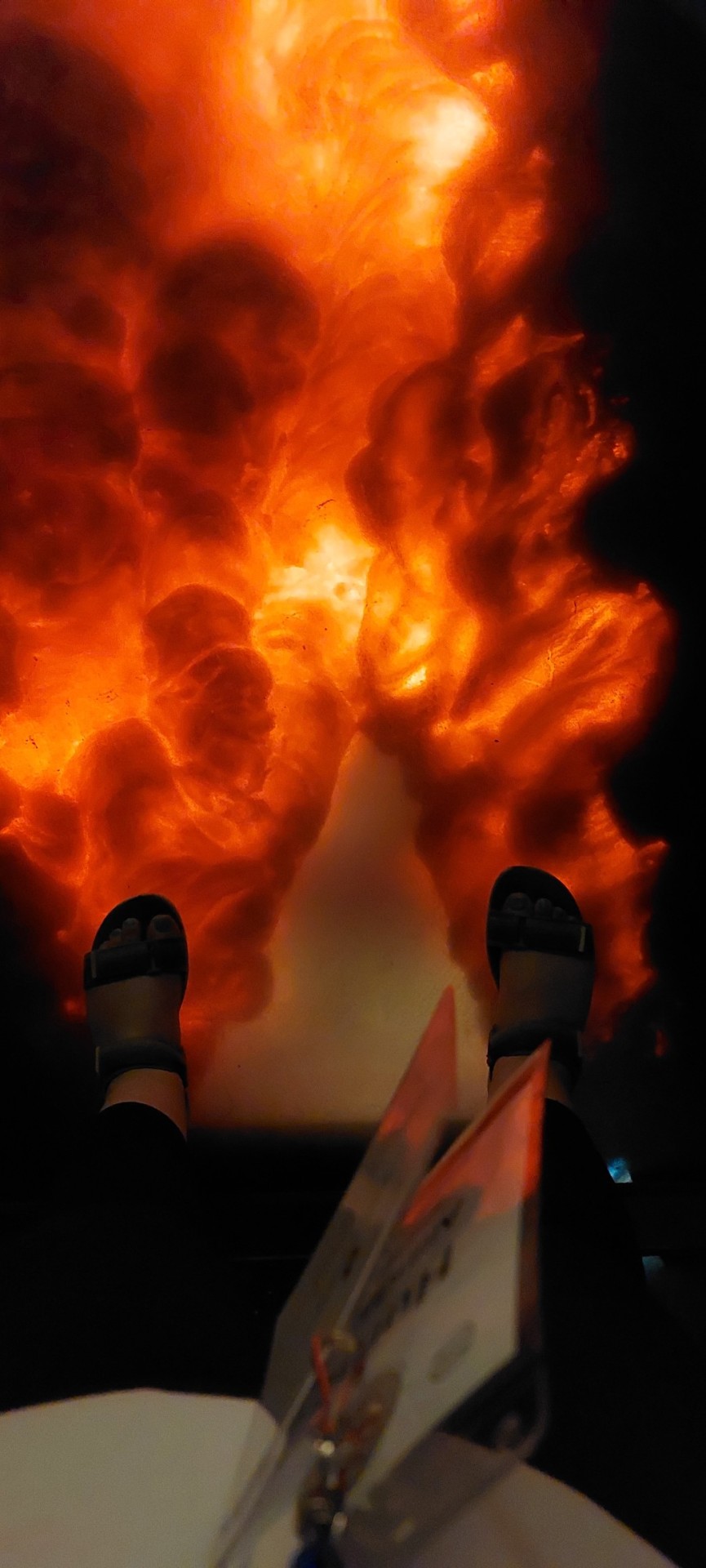
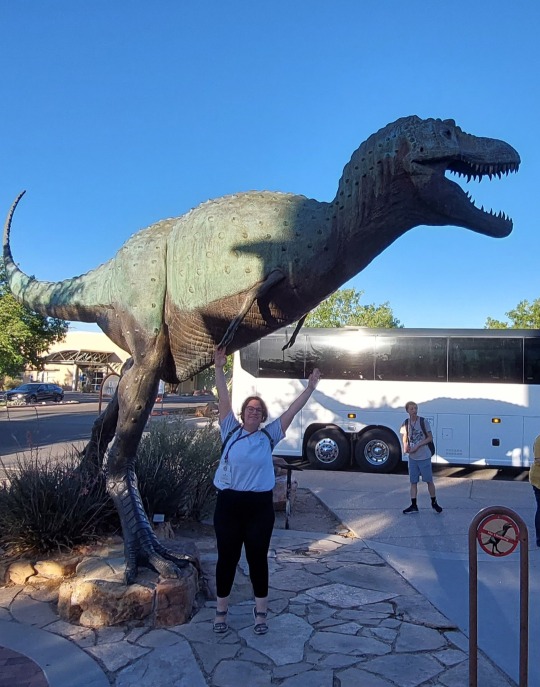




#the floor is lava#new mexico natural history museum#dinosaurs#pre history#alberta#new mexico#travel#albuquerque
0 notes
Text

your "lets read this creepypasta!" podcast would probably go better if you didn't use the fucking Cockmongler as your creepy face.

NOTHING SCARIER THAN A GUY AT A DINOSAUR MUSEUM IN ALBERTA CANADA
751 notes
·
View notes
Text

[ The skull is mounted on a custom steel armature, which allows for it to be seen all the way around. ]
"After seven years of work, the best preserved and most complete triceratops skull coming from Canada — also known as the "Calli" specimen — is on display for the first time since being found in 2014 at the Royal Tyrrell Museum in Drumheller, Alta.
A museum news release calls the specimen "unique" because of where it was discovered, the age of the rock around it, and how well it was preserved.
Following the floods that tore through Alberta about 10 years ago, the Royal Tyrrell staff were engaged in flood mitigation paleontology work when the triceratops skull was discovered in 2014.
Triceratops fossils are rare in Canada. This skull was found in the foothills of southwestern Alberta — an area where dinosaur fossils in general are uncommon — and nicknamed "Calli" after Callum Creek, the stream where it was discovered.
Transported via helicopter in giant, heavy chunks, the skull and most of the jaw pieces were extracted over the course of a month in 2015. The rest of the triceratops' skeleton was not found.
Roaming the earth roughly 68 to 69 million years ago, the museum says this skull was buried in stages, evident by the fossilization process.
"Paleontologists know this because the specimen was found in different rock layers, and the poorly preserved horn tips suggest they were exposed to additional weathering and erosion," reads a museum blog about the triceratops skull.
"The rest of the skeleton likely washed away," noting that the lower jaws were found downstream.
From 2016 to 2023, Royal Tyrrell technician Ian Macdonald spent over 6,500 hours preparing this fossil, removing over 815 kilograms of rock that encased the skull. This triceratops skull is the largest skull ever prepared at the museum and its third largest on display."
Read more: "Canada's biggest and best triceratops skull on display in Alberta" by Lily Dupuis.
#palaeoblr#Palaeontology#Paleontology#Dinosaur#Triceratops#Fossil#Cretaceous#Mesozoic#Ceratopsian#Extinct#Prehistoric#Photo#Article#Information#Museum#Royal Tyrrell Museum
2K notes
·
View notes
Text
An incredibly rare discovery: a complete hadrosaur skeleton.
The fossil is of the large, plant-eating, duck-billed species was found sticking out of a hillside at Dinosaur Provincial Park in Alberta, Canada.
At the moment, all that’s visible of the fossil is a portion of the dinosaur’s tail and right hind leg, but researchers Brian Pickles of the University of Reading and Caleb Brown from the Royal Tyrrell Museum explained that the way in which the fossil is arranged suggests the skeleton is in a sitting position — and may be fully preserved within the hill.
According to Brown, roughly 400 to 500 dinosaur bones have been excavated from the area — but finding any fossils with skin is quite rare. Even rarer is finding a dinosaur preserved in the same position as they were in life.
1K notes
·
View notes
Text
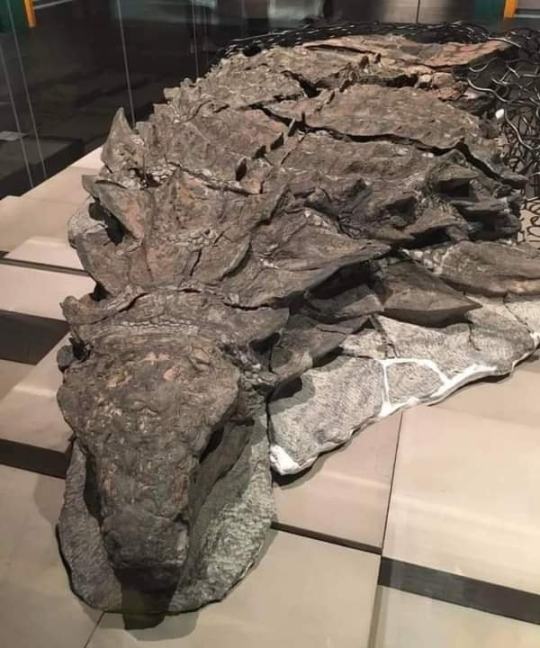
The Dinosaur Mummy The recent discovery of a dinosaur mummy has left archaeologists baffled. This dinosaur mummy is one of the best preserved ever found. This is evident from the appearance of the mummy, which still has intact skin and a hard shell. The fossil, which was found purely by chance while miners were drilling in Canada, is thought to be more than 110 million years old. The mummy was placed in the Royal Tyrell Museum of Paleontology in Alberta, Canada. After careful examination, it was discovered that the animal's skin also protected its intact intestines.
706 notes
·
View notes
Text

First tyrannosaur fossil discovered with its last meal perfectly preserved in its stomach
Researchers have found a tyrannosaur’s last meal perfectly preserved inside its stomach cavity.
What was on the menu 75 million years ago? The hind legs of two baby dinosaurs, according to new research on the fossil published Friday in the journal Science Advances.
Dinosaur guts and hard evidence of their diets are rarely preserved in the fossil record, and it is the first time the stomach contents of a tyrannosaur have been uncovered.
The revelation makes this discovery particularly exciting, said co-lead author Darla Zelenitsky, a paleontologist and associate professor at the University of Calgary in Alberta.
“Tyrannosaurs are these large predatory species that roamed Alberta, and North America, during the late Cretaceous. These were the iconic apex or top predators that we’ve all seen in movies, books and museums. They walked on two legs (and) had very short arms,” Zelenitsky said.
“It was a cousin of T. rex, which came later in time, 68 to 66 million years ago. T. rex is the biggest of the tyrannosaurs, Gorgosaurus was a little bit smaller, maybe full grown would have been 9, 10 meters (33 feet).”
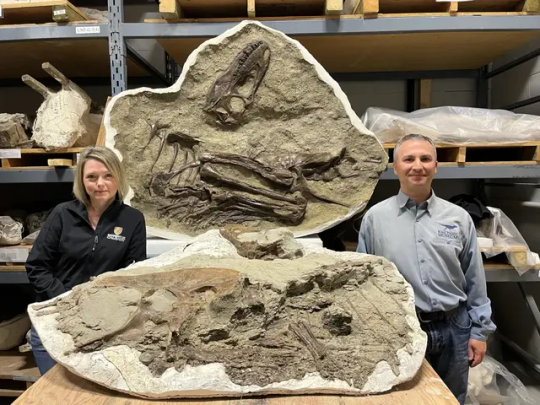
The tyrannosaur in question, a young Gorgosaurus libratus, would have weighed about 772 pounds (350 kilograms) — less than a horse — and reached 13 feet (4 meters) in length at the time of death.
The creature was between the ages of 5 and 7 and appeared to be picky in what it consumed, Zelenitsky said.
“Its last and second-to-last meal were these little birdlike dinosaurs, Citipes, and the tyrannosaur actually only ate the hind limbs of each of these prey items. There’s really no other skeletal remains of these predators within the stomach cavity. It’s just the hind legs.
“It must have killed … both of these Citipes at different times and then ripped off the hind legs and ate those and left the rest of the carcasses,” she added. “Obviously this teenager had an appetite for drumsticks.”

The two baby dinosaurs both belonged to the species called Citipes elegans and would have been younger than 1 year old when the tyrannosaur hunted them down, the researchers determined.
The almost complete skeleton was found in Alberta’s Dinosaur Provincial Park in 2009.
That the tyrannosaur’s stomach contents were preserved wasn’t immediately obvious, but staff at the Royal Tyrrell Museum in Drumheller, Alberta, noticed small protruding bones when preparing the fossil in the lab and removed a rock within its rib cage to take a closer look.
“Lo and behold, the complete hind legs of two baby dinosaurs, both under a year old, were present in its stomach,” said co-lead author François Therrien, the museum’s curator of dinosaur paleoecology, in a statement.
The paleontologists were able to determine the ages of both the predator and its prey by analyzing thin slices sampled from the fossilized bones.
“There’s growth marks like the rings of a tree. And we can essentially tell how old a dinosaur is from looking at those, the structure of the bone,” Zelenitsky said.
Changing appetites of top predators
The fossil is the first hard evidence of a long-suspected dietary pattern among large predatory dinosaurs, said paleoecologist Kat Schroeder, a postdoctoral researcher at Yale University’s department of Earth and planetary science, who wasn’t involved in the research.
The teen tyrannosaur didn’t eat what its parents did. Paleontologists believe its diet would have changed over its life span.
“Large, robust tyrannosaurs like T. rex have bite forces strong enough to hit bone when eating, and so we know they bit into megaherbivores like Triceratops,” Schroeder said via email. “Juvenile tyrannosaurs can’t bite as deep, and therefore don’t leave such feeding traces.”
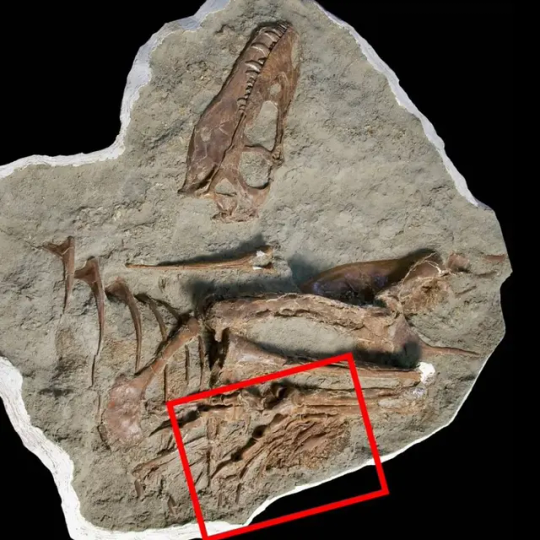
She said that scientists have previously hypothesized that young tyrannosaurs had different diets from fully developed adults, but the fossil find marks the first time researchers have direct evidence.
“Combined with the relative rarity of juvenile tyrannosaur skeletons, this fossil is very significant,” Schroeder added. “Teeth can only tell us so much about the diet of extinct animals, so finding stomach contents is like picking up the proverbial ‘smoking gun.’”
The contents of the tyrannosaur’s stomach cavity revealed that at this stage in life, juveniles were hunting swift, small prey. It was likely because the predator’s body wasn’t yet well-suited for bigger prey, Zelenitsky said.
“It’s well known that tyrannosaurs changed a lot during growth, from slender forms to these robust, bone-crushing dinosaurs, and we know that this change was related to feeding behavior.”
When the dinosaur died, its mass was only 10% of that of an adult Gorgosaurus, she said.
How juvenile tyrannosaurs filled a niche
The voracious appetite of teenage tyrannosaurs and other carnivores has been thought to explain a puzzling feature of dinosaur diversity.
There are relatively few small and midsize dinosaurs in the fossil record, particularly in the Mid- to Late Cretaceous Period — something paleontologists have determined is due to the hunting activities of young tyrannosaurs.
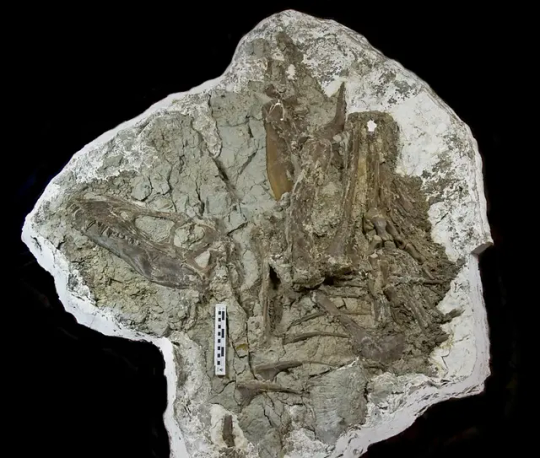
“In Alberta’s Dinosaur Provincial Park, where this specimen is from, we have a very well sampled formation. And so we have a pretty good idea of the ecosystem there. Over 50 species of dinosaurs,” Zelenitsky said.
“We are missing mid-sized … predators from that ecosystem. So yeah, there’s been the hypothesis that, the juvenile tyrannosaurs filled that niche.”
By Katie Hunt.


#First tyrannosaur fossil discovered with its last meal perfectly preserved in its stomach#tyrannosaur#Gorgosaurus libratus#Citipes#Citipes elegans#dinosaurs#paleontologist#Alberta’s Dinosaur Provincial Park#archeology#archeolgst#history#history news#ancient history
77 notes
·
View notes
Text
Wish list for CBS ghosts season 4
Make Patience a recurring antagonist for at least 2-3 episodes before that story gets resolved and she gets regulated to a background character.
Patience character to be 50% good religious farm girl, 50% crazy witch. She also needs to have a wicked(ly cool) ghost power
More of Isaac loving dinosaurs
More solo development for Isaac
More of Isaac and Hetty's awesome friendship
No Nigel for a while. I do not like him. He did a lot of things in his and Isaac's relationship that are textbook abusive partner behavior.
I think it is about time for Jay's restaurant to start up, and I would like that to actually become pretty successful/profitable. Mostly because I would like Sam and Jay to have a bit more disposable income to do things around the manor, and I know the B&B is unlikely to become super busy next season (unless the show is ending , which I really do not want).
The difference in treatment between the above ground ghosts and basement ghosts to be addressed. I know after season 3 that they aren't going to move them all up stairs. But it would be nice if Sam and Jay could like furbish the basement , and then more Basement ghosts than just Nancy got invited to come upstairs for games or discussion.
Just to be clear I still want Nancy to keep making her frequent visits up stairs and hang out with the man 8. I just also would not mind seeing Stuart or another nameless basement ghost standing or walking by in the background on the occasion.
Explore Pete's power more. He does not need to hop on a plane and go across the country or anything, but let him keep going out into town and having adventures. Also let him keep going on dates with other random ghosts outside of the house.
I know that Pete&Alberta will probably happen at some point in season 4. The thing is though while that ship was cute in season 1, the way the ship was handled in season 2 soured it like milk to me. Both characters need a lot of development, and separate explorations of what they want out of a relationship, before I can ship them again.
H-Money is still a couple I kinda like. I do not expect them to get back together in season 4 (Please not another season that is fully devoted to coupling up all the character), but I would like them to start scheming together again. Let them figure out how to interact together as friends, and build a stronger foundation to eventually, in season 5 maybe, try again.
I have heard people suggest that Pete's power could maybe be extend to getting the other ghosts through the barrier if they are like holding onto Pete's hand. I want this. Now I know Sass will want to visit a Pizza Hut, and Issac a dinosaur museum, but I would say the most important thing to do with that would be to take Thor and Flower over to the Farnsby manor to visit Bjorn and his girlfriend Judy. It would also be cool if there was a lesbian ghost living there they could set up Nancy with. Since Nisaac is on a "respite" and queer representation (preferably healthy queer representation) is important.
Everyone remember in season 2 when we learned about Flower's super protective, formally MIA, army vet brother : Rob. You remember how the show's staff said they would love to have Rob come to the B&B for a visit, and were already considering actors who could play him? I want this episode. Also if you cannot directly tell Rob his sister is a ghost on the property, then can Trevor or Alberta use their powers to help Flower send a message to Rob. To say that she still loves him. I cannot deal that both siblings spent like 50 years thinking the other hated them when neither did. It is to sad.
It would be cool if we could also have Ira visit once too. I know Flower did not love him like she did Michael or does Thor, but he was still someone who was a big part of her life for a while, and knowing her cannonly had a large impact on his. Maybe we find that while he has done charities in her memory, trauma over watching her be killed by a bear has also lead him to sponsor bear hunts or poaching. Flower is horrified. Then Sam and Jay have to spend his visit looking for a way to convince him that is not what Flower would have wanted.
Four standard episodes for each season are a Halloween episode, an episode where Bela visits, one where Stephanie wakes up, and one where Crash appears and is slightly relevant. I have no idea what to do for an episode with Crash, but for the others
-Ghost animals on Halloween
-Home theater night for ghosts and guests on the night Stephanie wakes up, complete with all the drama of set up and shenanigans that going to the movies encores.
- Bela is broken up with Eric, she does not even like him. This time her and Jay's parents come with her for the visit. Bela wants all the latest gossip surrounding the ghosts, but they have to tip toe around the parents. Jay's dad does not fully support the B&B even without the knowledge that it is haunted, and Sam does not want to give her mother in law another reason to suspect that she might be crazy.
Owning back to the "Can Pete take the other ghosts off the property" theory, can Thomas Woodstone be a ghost who died visiting a neighbors property. We have no reason to see Elias again since he has decided to stay put in Hell. But Thomas reappearing could be interesting for both Hetty and Alberta. If he does show up though I want the twist to be that he is actually severally cognitively impaired (think Lenny from oMaM)... I mean the man was from an inbred family, played with lead based toys as a baby, had a cocaine addict mom, and a father who was a lot of things. He could not have been all there. Also address more on if Earl ever actually cared for any of the people he was two timing (again development that needs to happen to make Alberta want to go from dating an Earl to a Pete).
A Sasappis based episode that is not his death story. I feel like he needs at least one more episode exploring what his life alive was like, to be appropriately gutted when we learn about his secret death.
Actually maybe we can hold off on Sass's death and Hetty's ghost power until season 5. let's keep the element of mystery in the show for a little longer.
#Cbs ghosts#ghosts 2021#ghosts US#sam arondekar#jay arondekar#cbs ghosts Thor#thorfinn#sasappis#cbs Sass#isaac higgintoot#Patience the puritan#anti Nigel chesum#Hetty woodstone#Alberta Haynes#Susan “Flower” Montero#pete martino#Alberta x Pete#Flower X Thor#trevor lefkowitz#H-Money#Nancy the Cholera ghost#Nancy the basement ghost#Thomas woodstone#Anti earl#cbs ghosts season 4#Cbs ghosts season 4 wish list#flower montero
34 notes
·
View notes
Text
Thanks to @plokool and @killdeercheer for helping me put this together in a way that wasn't too usa or europe biased ^_^
237 notes
·
View notes
Text
T. rex Madness Semi-Final: Fossil Specimen (Black Beauty: RTMP 81.6.1) vs. Jurassic Park (Rexy)
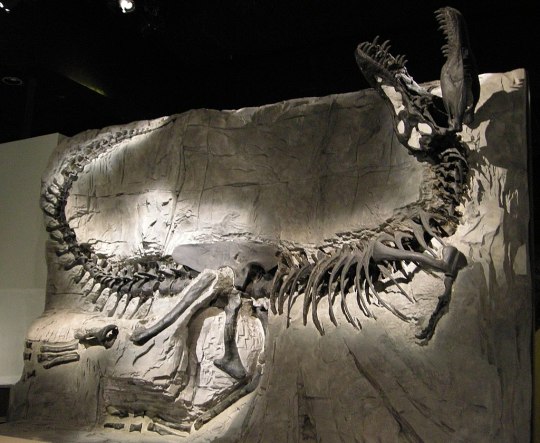
Fossil Specimen (Black Beauty: RTMP 81.6.1) – Black Beauty, discovered in 1980, is distinguished both by its striking appearance and by being the first T. rex specimen to receive a nickname. It is on display at the Royal Tyrell Museum in Alberta, Canada and has replica casts around the world.
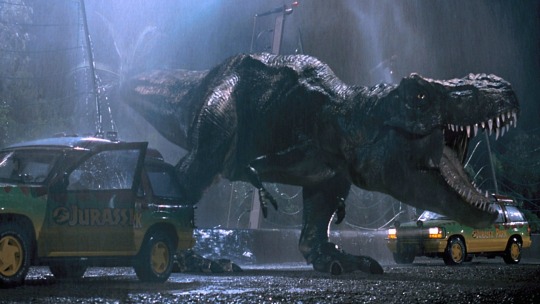
Jurassic Park (Rexy) – The legend, the icon. Rexy appears in more Jurassic Park movies than any other individual dinosaur, and for good reason. In the original film, if the raptors demonstrated the fearsomeness of non-avian dinosaurs and the Brachiosaurus the wonder and majesty, Rexy managed to capture both. Whether she’s chasing the heroes, fighting off a pack of raptors, or having a showdown with a rival giant predator, Rexy will always have a special place in the hearts of anyone who loves dinosaurs.
102 notes
·
View notes
Text
@just-late-roman-republic-things seems to be plowing through Suetonius Augustus and I am here for it!
Your mention of the dinosaur bones that Augustus used as home decoration reminds me of a story about Tiberius! (I swear, everything recently has been reminding me about Tiberius!)
By the way, finding the ancient source for this story was shit! I remembered reading this like a year ago, and I had forgotten which ancient source this was from. Using my critical thinking skills ("hmmm tiberius hmmmm dinosaur"), I assumed that this story came from Pliny's Natural History.
It did not.
I was searching through the Natural History for so long that I was starting to wonder if I had made the story up!
After searching through the Natural History for ages, I finally used more critical thinking skill and was like "Hmmm. Maybe if I google this, I could find an article about the event and maybe possibly it would cite a specific part of the Natural History!"
I googled it, found an article about the event, and it cited Phlegon's Book of Marvels.
Whoopsie! I was looking through the wrong book this whole time! In my defense, Pliny and Phlegon actually are pretty similar names if you squint sooo...
(it was however worth it to look through the Natural History because I found the funniest story about Tiberius ever but that's a story for another day)
Now that I have the ancient source of this story, I can finally tell it!
Basically, there was an earthquake which opened up all sorts of cracks on the ground. And in those cracks, there were dinosaur bones!
The people were pretty spooked so they took a tooth and sent it to Rome. And this was a massive tooth.
The tooth was showed to Tiberius and he was asked if he wanted the rest of the bones. He was like "Well, I'm really curious about this thing, and I'm aching to get an idea of what size it was, but it feels like graverobbing to take the rest of the bones."
So Tiberius got some dude called Pulcher who was skilled in geometry. Tiberius asked him to make a face in proportion to the tooth. The dude estimated the size of the creature using its tooth as a reference and then showed Tiberius a construction of it he had made. Tiberius said that looking at the construction was good enough and sent the tooth back where it came from.
Tiberius and (especially) Pulcher, the world's first paleontologists!
I love this story. It's wild. Though I do wonder what happened to the construction. Did Tiberius keep it?
If Tiberius randomly showed up at my door one day, I'd bring him to Drumheller to go to the Royal Tyrrell Museum. Alberta is one of the most boring places in the world but we do have a banging dinosaur museum!
On the hours-long drive there, I will most certainly give him like a billion questions, though. "How was Caligula like? How was Augustus like? How were you like? How was Livia like? How was Sejanus like? Actually, scratch this. Name every single person you know and tell me how they were like and how they looked like. What did you do in Capri? Explain your entire life from beginning to end, giving extra attention to the personal parts! I don't want to hear about wars I want to hear about what people were like! Could you read Suetonius to me and point out parts where he's wrong? Could we watch Domina together and you can tell me if you like your characterization or not?"
For everyone's sake, it's good that dead Roman emperors usually don't randomly show up sometimes (not counting whatever the fuck was happening right after Nero died!)
If you want to read the Tiberius Tooth sTory (haha Triple T) for yourself, you can here. Look for §13.
#ancient rome#roman history#ancient history#history#tiberius#emperor tiberius#dinosaur#dinosaurs#phlegon#phlegon book of marvels#pliny the elder#paleontology
38 notes
·
View notes
Text


Happy Fossil Friday!
Who: Albertosaurus sarcophagus ("Alberta-Lizard" "flesh-eater")
What: A large tyrannosaur from the Theropoda clade.
When: Late Cretaceous
Where: Horseshoe Canyon Formation in Alberta, Canada
Fun Fact!: Albertosaurus was first discovered on the Red Deer River in Drumheller, Alberta in 1884 by geologist Joseph Tyrrell, for whom the world famous museum in Drumheller is named. Tyrrell's specimen remained unnamed until 1905 until the discovery of Tyrannosaurs rex in Colorado. This coincided with the province of Alberta being founded on September 1st in 1905 and Albertosaurus shares its namesake.
Why are they cool?: Evidence suggests that these large, predatory dinosaurs lived together in family groups and hunted in packs, rather than in solitary. The same may be true for other theropods.
Here is a link to a paper discussing the ages and assemblage of the Dry Island Bonebed in Drumheller, where a whopping 26 Albertosaurus were discovered!
Image Credits: (Left and Right) www.thoughtco.com - fun fact! both these images were taken at the Royal Tyrrell Museum in Drumheller Alberta.
#palaeontology#paleontology#fossil friday#fossils#paleo#albertosaurus#albertosaurus sarcophagus#alberta#royal tyrrell museum#drumheller#tyrannosaur#horseshoe canyon
7 notes
·
View notes
Text
Updating you guys on our south/central Alberta tour itinerary between June 8-18th ish thus far:
- Okotoks (we hear there’s a number of things there)
- Vulcan, possibly Nanton
- Dinosaur Provincial Park / Drumheller
- Stettler and/or Red Deer
We are still budgeting out campgrounds and whether we risk first come first serve and we’re actually avoiding Calgary much more than usual this time around (sorry Calgary). Still taking suggestions for things to see and do on a fairly low budget, but I expect we are going to do a lot of museums and sketching/painting type things.
We are still debating whether we want to go to Medicine Hat (too many things are closed on the days we would visit) or Lethbridge (Nikka Yuko is open.....!) but they might be a little out of our scope... we can be persuaded though.
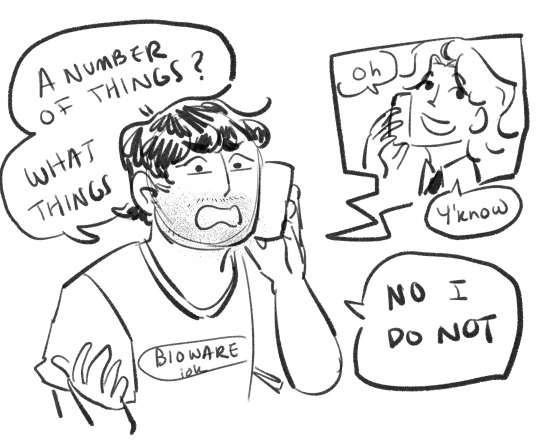
#hapo rambles#projectcanada cities#pc: edmonton#pc: calgary#hapo doodles#digital art#clip studio paint#edward murphy#calvin mccall#for context i have been through red deer several times and drumheller a few#but not really anywhere else#quatsch has done more camping in the area than i#last time i was in lethbridge was when i was moving to the states 2 decades ago#so i was not in the best of moods lol#i have once again forgotten eds playoff beard#updated with beard while we are still in OT hope this helps#UPDATE WE WON IN OVERTIME THE BEARD DRAWING WORKED#UPDATE: our campsite at vulcan is BOOKED
20 notes
·
View notes
Photo

[ A mother troodon sits on her nest of eggs, illustrated by Masato Hattori. ]
“Seventy-five million years ago in southern Alberta, a river flooded, burying the eggs of bird-like dinosaurs nesting on the nearby plain. Now, tiny pieces of those fossil egg shells offer new evidence about how dinosaurs lived, bred and evolved into birds.
A new study shows emu-sized, meat-eating troodons were as warm-blooded as birds, with body temperatures of more than 40 C. But unlike modern birds such as chickens that can produce one egg a day, troodons used a very slow egg-forming process similar to the one used by reptiles like crocodiles.
That supports a previous hypothesis that nests found containing up to two dozen eggs were shared by multiple troodons, similar to the way ostriches share communal nests today.
"So essentially, from an eggshell … we were able to get and deduct information about their reproductive system and also their behaviour," said Mattia Tagliavento, lead author of the study published Monday in Proceedings of the National Academy of Sciences.
François Therrien, curator of dinosaur paleobiology at the Royal Tyrrell Museum in Alberta and co-author of the study, said he was surprised by just how much information could be gleaned from tiny fragments of eggshell no bigger than a fingernail.”
Read more: “What fossil eggs found in Alberta reveal about how dinosaurs became birds” by Emily Chung.
#Palaeoblr#Dinoblr#Palaeontology#Paleontology#Troodon#Dinosaur#Cretaceous#Theropod#Mesozoic#Article#Information#Art
87 notes
·
View notes
Text
a personal reflection on decolonization
riel s. | 2022
Tansii kiiya (hello, how are you?) my name is riel starr and I am a Red River Michif artist and academic. my history on his land begins thousands of years ago among the peoples of the great plains, and my written history begins in the late 1600s with my first French ancestors and their unnamed first nations wives. my first First Nations ancestor is an unnamed woman referred to in my grandmother’s family tree as “Cree Woman”. I am Red River Métis on my mother’s side. Our historic Métis family names are Berthelet, Caron, St. Germaine, Dazé, Larivière and Dubois, and we come from the communities of Point à Grouette (now called St. Agathe), St. Norbert, and St. Vital (now modern-day Winnipeg) as well as the historic Batoche, Saskatchewan. My Berthelet ancestors were notable community leaders in Pointe à Grouette and my Caron ancestors including my fifth great uncle jean caron sr. fought in the North West resistance of 1885 at the battle of Duck Lake when he was fifty-two years old. Jean Caron Sr’s house is now a historic site in Batoche. As for myself my mother is a Métis educator and academic and my father is a settler archaeologist-turned-locksmith. I introduce myself in this way, the traditional way of Métis writers to contextualize my family, my knowledge and experiences, as well as my place on this land.
Natually, my native mother and my settler archaeologist father never married and split before I was old enough to form any memories. Museums and history have always been a fascination to me; the Royal Terrell Museum in Drumheller, which I dubbed “the dead dinosaur museum” and the Royal Alberta Museum which I called “the dead mouse museum” after my favourite display. The display was a larger-than-life diorama of a mouse, it’s intestines showing, the organisms that helped decompose the corpse were also displayed, massive daddy long legs, gigantic ants, worms thicker than my arm. The RAM is an interesting place. A few years ago, it was moved into a new building downtown and I could no longer spend hours finding fossils in the limestone exterior of the original museum. The place had changed drastically. As I reminisce on what I loved about the RAM I realize that all the things I disliked were their representations of Indigenous people; the uncanny wax figures with placid skin that did not resemble a single Native person’s skin that I had met. and the artwork they portrayed as artifacts. What makes a beaded bag so different from a Van Dyck if they’re the same age? And honoured the same amount by the people who made them?
Another place of importance growing up was Fort Edmonton Park. Like Heritage Park, Fort Edmonton has costumed interpreters, who teach visitors history as if the interpreters were of that time. In the summer of 2017, my lifelong dream came true, and I became a volunteer costumed interpreter with my mentor Sheldon Stockdale, another Métis person, and we were able to teach our history in the way we felt was right, something deeply important to the Métis people. An experience we had that stands out vividly is working on Fort Edmonton’s 1920 Street, and educating visitors on the history of pemmican, a sort of ancient protein bar made from berries, dried meat, and animal fat. Pemmican was a staple of survival for the Métis, and we were asking visitors to help us in redesigning the packaging for the bar. The historic package had a representation of an Indigenous person on it, a caricature of a race. We asked visitors if turning Indigenous people into mascots should be accepted, and sadly many people didn’t see the problem. Sheldon and I borderline argued with a man who seemed to see no problem in reducing us, the people speaking to him, to caricatures. In a similar vein, someone once gave me Chicago Blackhawk’s stickers when i was six, and not knowing a thing about hockey I asked my mother who the stickers were of. I’m guessing my mother did not want to explain the history of colonization and caricatures of Indigenous people, so she dismissed my question by telling me that the man in the tacky illustration was my ancestor.
Decolonizing art history seems like an impossible task, and perhaps it is. You cannot separate someone like Emily Carr from art history in Canada, however you can change the way you teach her work. Perhaps decolonizing art history means recognizing the ways in which “art history” as a field of study is deeply Euro-centric, and how the way of teaching this history is the same. I took my first semester at AUArts in the fall of 2020 after transferring from MacEwan after completing a two-year diploma at MacEwan University. I had a sculpture class a media arts class an art history class. The more I consider how to decolonize our history the more I understand that it is not the history that can be decolonized, it is the way we are teaching said history. It is the way that so much of our education is taught to us through a colonial lens, rather than a multifaceted history with a multitude of perspectives and peoples contributing until an entire picture is formed.
In the fall of 2020 in my media arts class my professor Kurtis Lesick was discussing an artist, a black artist who had him and others participate in a performance in which in that space the black artist allowed the participants to say the N-word. Rather than describing the piece in the way I just did removing the slur, Kurtis Lesick made the conscious decision to say the N- word twice. A person I had once thought to be an ally of mine, who knew the language of decolonization. Earlier this year a classmate in this class who was also in my sculpture class in the winter of 2022 told me that ‘knowing me has made her a better person’, this woman does not know me, and I do not know her, but I knew her in that moment. I knew that she wanted me to absolve her of her settler guilt. White settlers love referencing Tuck and Yang’s Decolonization Is Not a Metaphor but sometimes I wonder if they truly understand that it is simply not enough to know the language of decolonization, that you must be actively anti-colonial in a field that is built on colonization.
I spent a lot of time at Fort Calgary this semester for my FINA class, critiquing their exhibitions wondering how they can be improved if they can be improved, and I learned that given their budget that it is not possible. Fort Calgary, like other institutions cannot afford to replace their current exhibits and entirely redesign the way they teach history. What they can do is acknowledge the missing pieces, they can acknowledge the gaps they can acknowledge the fact that there’s more than one canon of history. Sometimes I wonder if the mosaic of history is too complex to decolonize; knowing that we will never return to a world like the one that existed pre-colonization. I think about my one classmate who tokenizes me, who knows how to use decolonial language to appear one way, but who never puts those concepts into practice. I think about the settlers who think that decolonization is re-colonizing the Americas but with “the Indians” in charge this time.
I now understand that decolonizing art history cannot happen without first decolonizing institutions. I have learned that we cannot forget that we once taught art history in an i way we cannot forget the way colonization has infiltrated every aspect of the education system down to the teaching styles of each professor. if we forget how colonial art history is in the first place, we will forget why we need to decolonize. Considering the hand that art history is hard in colonization around the world, I consider about the way southeast Asian women’s bodies are talked about in my textbooks versus European odalisque paintings. Brown people’s bodies were inherently sexualized and seen as dirty, while white people’s bodies were adored and deemed Classical.
Maybe colonization is another movement in the worldwide canon of art history. Another period in the bar graph of history- as google images seems to see art history. Perhaps Emily Carr and Paul Gauguin are the faces of this genre. Just as colonization cannot be forgotten among its victims, it cannot be forgotten by its perpetrators, who still believe they are a superior culture and race. Genres of literature such as post-colonial writing from India and Sri Lanka may suggest, there was a period of colonial art and literature, perhaps it is ongoing, possibly dying out, maybe here to stay. There will always be an antithesis, an attempt to view art and art history from a different perspective, and that is how we can decolonize art history.
#i posted this on my artist page but i only use it for professional reasons and i don't wanna share it here unless you're a mutual lolol#riel text#my writing#academia#institutional critique#art writing#decolonization#indigenous#métis#michif#indigenous art#first nations art#FNMI art#art#alberta#calgary#post colonialism#colonialism#canada#land back
7 notes
·
View notes